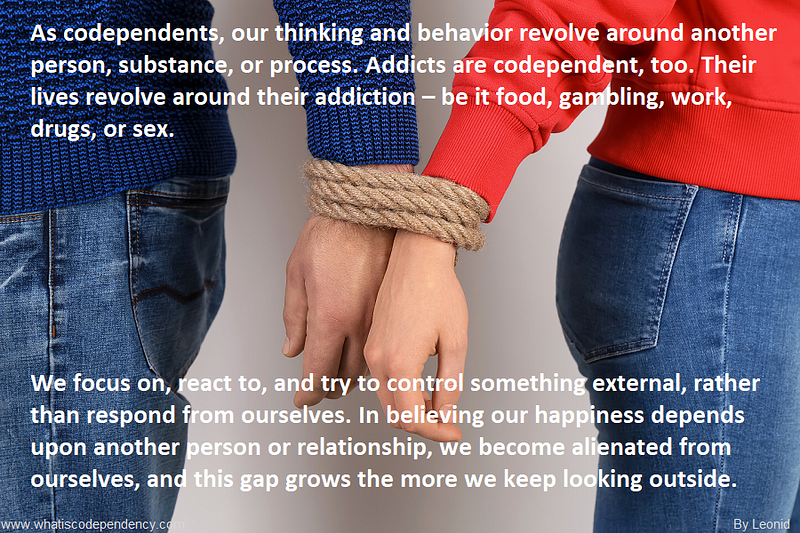Understanding Codependency in the Context of Addiction Recovery
Written on
Chapter 1: The Misunderstanding of Codependency
A recent article from the New York Times titled “Codependency Is a Toxic Myth in Addiction Recovery” criticized the codependency movement while advocating for CRAFT addiction treatment. This portrayal sparked frustration, as the author failed to grasp the essence of codependency recovery and its benefits for countless individuals. Here’s my perspective:
The article lacks a nuanced discussion on codependency and presents inaccuracies. A more fitting title could have been: “Innovative Approaches to Addiction Recovery.”
The assertion that codependency cannot be quantified is incorrect. Reliable instruments, such as the Spann-Fischer Codependency and Composite Codependency Scales, effectively measure this condition. Numerous studies validate the existence of codependency, linking it to depression and negatively influencing both the lived experiences of codependents and their relationship satisfaction.
The article claims that attachment is inherently healthy, which is true; however, codependents typically struggle with insecure attachments that lead to various issues. The piece also mistakenly posits that recovery's primary aim is self-sufficiency. In fact, the recovery process promotes interdependency and the formation of healthy connections.
Section 1.1: The Role of the DSM in Misrepresenting Codependency
The article dismisses codependency due to its absence from the Diagnostic and Statistical Manual of Mental Disorders (DSM). However, the DSM has faced significant critique from mental health experts and the National Institute of Mental Health regarding its utility, reliability, and validity, as well as concerns over potential biases from its task force members’ ties to the pharmaceutical industry. While the DSM serves useful functions in research and insurance, it oversimplifies complex human behaviors like codependency and detracts from addressing the underlying social and relational conditions.

Subsection 1.1.1: The Existential Impact of Codependency
Regardless of whether codependency fits into a biomedical framework, it holds profound significance for many individuals. It represents a disconnection from one’s true self, as Kierkegaard noted: “The greatest hazard of all, losing the self, can occur very quietly in the world, as if it were nothing at all.” This sentiment resonates with many codependents who, absorbed in the lives of others, often lose sight of their own identity.
In "Codependency for Dummies," I describe a codependent as “someone who cannot operate from their true self and instead aligns their thoughts and actions around substances, processes, or other individuals.”
Section 1.2: The Roots of Codependency
The origins of codependency lie not in biomedical factors but in parenting styles characterized by control or emotional unavailability. Research in child development confirms that such detrimental parenting can severely affect one’s sense of self and adult relationships. Dysfunctional upbringing can lead to disconnection from one’s authentic self and instill deep-rooted shame, contributing to feelings of inadequacy and unworthiness. This shame fosters low self-esteem, fear, guilt, anxiety, and depression, which are prevalent among codependents. Studies indicate that self-esteem is a significant predictor of relationship satisfaction, highlighting how codependents’ struggles with self-worth adversely affect their relationships.
Chapter 2: The Comfort of Diagnosis and Support
Rather than feeling "pathologized," participants in a study reported finding solace in their diagnosis as it provided clarity regarding their symptoms and challenges, along with a pathway to healing. This mirrors what I have frequently heard from clients. In the 1970s, Melodie Beattie articulated the silent pain experienced by many codependents, offering them hope and sparking widespread interest in the topic.
Living with an addict is undeniably taxing on families, often leading to an obsession with a loved one’s struggles. Researchers have noted that the reactions of codependents often preceded their partners’ addiction and persisted even after sobriety. As codependents begin their recovery journey, it often prompts addicts to confront their own issues and consider seeking help.
It became evident in the early 1950s that a twelve-step model could benefit family members too, leading to the establishment of Al-Anon Family Groups. These groups and similar programs advocate for empathy towards those battling addiction and emphasize supporting them during recovery by avoiding judgment and refraining from discussing past behaviors.
Section 2.1: The Role of Tough Love
The article suggests that advocates for codependency treatment often encourage expelling addicts from their lives. However, such an approach, characterized by tough love and extreme measures like no contact, is typically seen as a last resort after various interventions and costly treatment programs have failed. Addicts may have repeatedly rejected help or caused significant emotional and financial damage to their families. While the article rightly emphasizes the need for families to establish boundaries regarding violence, it fails to address the broader context.
CRAFT has introduced a valuable methodology, yet it is labor-intensive and costly to implement, and has not demonstrated a significant increase in long-term abstinence rates. Reports indicate that 85% of individuals relapse within a year after undergoing rehab.
In Alcoholics Anonymous, a common adage is, “If my spouse had helped me one more time, I wouldn’t be alive today to tell this story.” Similar to the mother mentioned in the article, I once had a client whose attempts to support her son in rehab ultimately led to his tragic downfall, as he misused the funds she provided.
Many families face emotional and financial devastation while trying to aid an addict, sometimes resulting in the addict’s death despite their efforts. It’s common for loved ones to blame themselves for these outcomes, but it’s important to recognize that the root cause lies with the addiction itself rather than their actions. The state’s previous criminalization of addiction has not been constructive. Exploring the best ways to assist an addict is an ongoing challenge. New and varied approaches should not serve as a basis to critique codependency, a treatment that has provided assistance to millions.
© 2022 Darlene Lancer